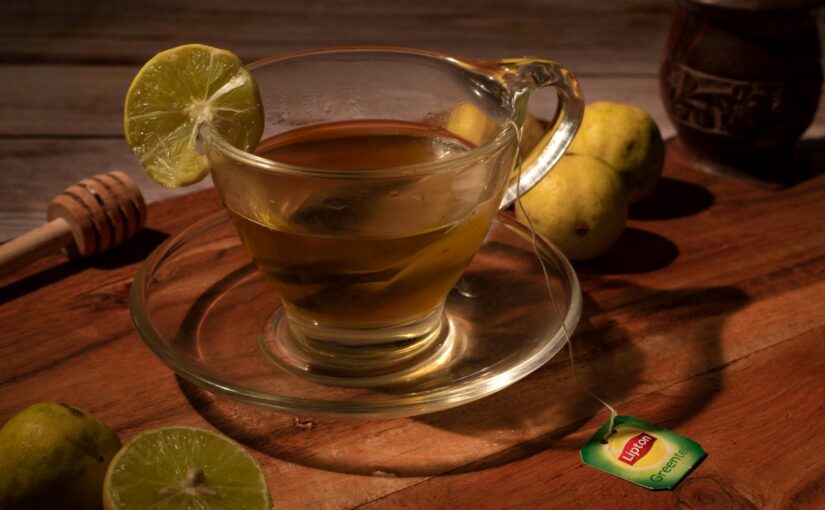Ginger tea
Ginger tea, which is widely known as a trusted remedy for nausea, has a spicy and full-bodied taste. The antioxidant gingerol is the principal bioactive disease-fighting compound found in ancient ginger root. Ginger also contains trace amounts of vitamins and minerals, such as vitamin B3 and B6, iron, potassium, and vitamin C.
Although there is no scientific research on ginger tea, there is research on ginger itself as it has been used as an herbal medicine for a variety of health problems. The immune system can be boosted and inflammation can be fought with ginger. The ability of ginger to treat various ailments, including gastrointestinal function, pain, inflammation, metabolic syndromes, and more, has been supported by a recent systematic review of its effects on human health.
Ginger has the potential to be dangerous for individuals who are taking antiplatelet drugs like aspirin or clopidogrel (Plavix) or anticoagulant drugs like warfarin (Coumadin). If you want to take a drug to treat high blood pressure, try either apixaban (Eliquis), dabigatran (Pradaxa), or rivaroxaban (Xarelto). During and after surgery, extra bleeding can be caused by ginger. If you have a health condition or are pregnant, consult with your doctor to determine whether drinking ginger tea is safe for you.
Hibiscus tea
The brightly colored flowers of the hibiscus plant are what make hibiscus tea. The colors that are most commonly used in beautiful blooms are red-orange, pink, yellow, and white. The hibiscus plant’s ‘calyx’ is responsible for protecting the bloom. In hibiscus tea, dried calyces are utilized, which provide a refreshing yet tart flavor. In addition to providing antioxidant power, hibiscus tea contains small amounts of potassium, calcium, magnesium, and other trace minerals.
Hibiscus tea offers antiviral and cardiovascular benefits, mainly due to the antioxidant anthocyanins. The effectiveness of this herbal tea against certain strains of bird flu has been demonstrated. Hibiscus tea has been shown to have the potential to lower blood pressure in a study. These benefits have been confirmed by a meta-analysis of studies on the topic. The ability of this herbal tea to decrease LDL (bad) cholesterol levels is another intriguing cardiovascular benefit. A research review showed that consuming hibiscus tea or extract can decrease bad LDL cholesterol and triglyceride levels.
Avoid drinking hibiscus tea if you take the diuretic medication hydrochlorothiazide because the two may interact negatively. Hibiscus tea may also interfere with the effects of aspirin, and health professionals recommend taking them 3–4 hours apart. Verify with your physician what is the most suitable option for you.
Chamomile tea
Chamomile tea has been proven to be a natural remedy for a variety of health issues. Diabetes, menstrual pain, and sleep problems, among other ailments, may be managed by the nutrients contained in it. Chamomile is a plant that is a member of the Asteraceae family. Both German (Chamomilla recutita) and Roman (Chamaemelum nobile) varieties of chamomile are commonly used for tea. To make tea, people can dry and steep small flowers produced by the chamomile plant, which are similar to daisies. Flavonoids, which are chemicals found in chamomile, may be responsible for its potential benefits.
Chamomile tea is generally safe and well-tolerated for most people. If you are pregnant or have allergies, it may be advisable to avoid chamomile tea. Chamomile tea has been the subject of research that suggests it may have many benefits, but more research is needed to confirm them. When people have serious illnesses, chamomile tea should not be used as a substitute for mainstream medical treatments.
Peppermint tea
Peppermint tea is a natural sweet beverage that is free of caffeine. It has the potential to have health benefits such as improving digestion, boosting focus, and relieving migraines. Peppermint (Mentha piperita) is an aromatic herb in the mint family that is a cross between water mint and spearmint (1 trusted source). It has been in use for thousands of years due to its pleasant, minty taste and health benefits, which it is native to Europe and Asia. Peppermint is used as a flavoring in mints, candies, and other foods.
Peppermint is popularly consumed as a refreshing, caffeine-free tea by many people. Peppermint leaves contain several essential oils including menthol, menthone, and limonene. Menthone gives peppermint its cooling properties and a recognisably minty scent. Peppermint tea is often consumed for its flavor, but it could also have a number of health benefits. The scientific study of tea has been limited, but peppermint extracts have been studied.
Echinacea tea
Echinacea is a group of plants that contain antioxidants and may aid in immune support. The recommended dosage for them varies based on the different forms they come in. Echinacea, commonly known as purple coneflower, is an immensely popular herb worldwide. It has been used by Native Americans for centuries to treat various ailments. Today, its primary use is as an herbal remedy for the common cold or flu that is available over-the-counter. Pain, inflammation, migraines, and other health issues can also be treated with it.
Sage tea
Sage tea is a source of various healthy compounds that are beneficial for your skin, mouth, and brain. It may also help protect against certain diseases, though more research is necessary. The leaves of common sage (Salvia officinalis), an herb in the same family as mint, are used to make sage tea, which has an aromatic infusion. Commonly used as a spice, sage has a long history of use in alternative and traditional medicine. Notably, its tea is packed with potential health benefits, although scientific research on this drink is still in its preliminary stages.


